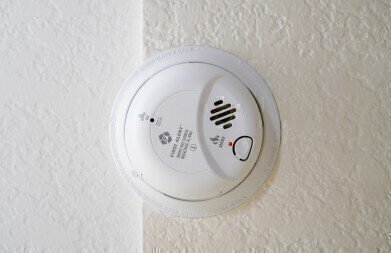Gas Detection
How Are Gases Detected?
Nov 13 2022
Gas detection is an important responsibility for industrial site owners, plant managers and other relevant decisionmakers. Not only does it ensure that the air to which employees, customers and the general public are exposed is safe, it also allows such individuals to comply with their legal obligations. What’s more, it’s an essential way of identifying leaks, improving efficiency and optimising operations for a more attractive bottom line.
But how, exactly, do gas detectors work? The exact science behind these contraptions can vary significantly from one model to another, depending on the type of gas being detected and the physical characteristics of the site in question. There are a wide variety of different techniques for gas detection and, thanks to the relentless march of science and technology, more are emerging all the time. However, here’s a brief introduction to some of the most common.
Catalytic combustible gas detectors
This type of detector is ideal for identifying flammable and potentially explosive gases in an environment. It works by causing combustion of the sample gas (or gases) within its sensor chamber, which indicates whether or not the ambient concentrations of the gas pose a risk.
Catalytic combustible gas detectors react with most combustible gases and offer good linearity, meaning their accuracy is generally reliable. However, they do have drawbacks and limitations. Firstly, they require a minimum of 14% oxygen in the atmosphere they’re sampling to function, while they’re also incapable of detecting trace amounts of gases and as such are not useful for determining toxicity. They’re also susceptible to humidity, condensation, lead and silicon, among other substances, and generally do not have a lifespan of longer than one year.
Photoionization detectors
Photoionization detectors, more commonly known as PIDs, were first developed in the 1960s and have been widely used in commercial and industrial settings since the 1970s. They bombard the sample gas with UV photons, which are absorbed into the gas and ionize it. This produces an electric current which can be interpreted as a numerical figure, thus indicating the concentration of the gas.
PIDs are most commonly used to gauge levels of volatile organic compounds (VOCs) and can run continuously, producing instantaneous results in handheld devices that can be easily moved into a desired location. This portability, alongside their efficiency and affordability, has made them supremely popular. However, they have traditionally had a tendency to produce false negatives and false positives due to the interference caused by humidity, but a breakthrough pioneered by ION Science appears to have solved that particular issue.
Electrochemical toxic detectors
This type of detector is specifically geared towards gauging concentrations of a particular substance and at present, there are sensors available for over 30 different gases, including ammonia (NH3), carbon dioxide (CO2), carbon monoxide (CO), chlorine (CI), hydrogen cyanide (HCN), hydrogen sulphide (H2S), nitrogen dioxide (NO2), nitric oxide (NO) and sulphur dioxide (SO2).
Electrochemical toxic detectors have excellent accuracy and are capable of sampling large or small quantities at a time. For CO and H2S, they can last up to two years, but will require replacement after just 12 months for most toxic gases. The liquid inside them can also freeze in sub-zero temperatures and they may be susceptible to damage at altitude, making them not ideal for all applications.
To learn more about how gases are detected, by whom and why, please consult the informative The CoGDEM Guide to Gas Detection, now available to purchase online.
Digital Edition
AET 28.2 April/May 2024
May 2024
Business News - Teledyne Marine expands with the acquisition of Valeport - Signal partners with gas analysis experts in Korea Air Monitoring - Continuous Fine Particulate Emission Monitor...
View all digital editions
Events
Jul 30 2024 Jakarta, Indonesia
China Energy Summit & Exhibition
Jul 31 2024 Beijing, China
2024 Beijing International Coal & Mining Exhibition
Aug 07 2024 Beijing, China
IWA World Water Congress & Exhibition
Aug 11 2024 Toronto, Canada
Aug 25 2024 Stockholm, Sweden and online









.jpg)








